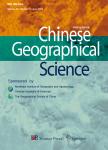Relationships Between River Water Quality and Landscape Factors in Haihe River Basin, China: Implications for Environmental Management
Relationships Between River Water Quality and Landscape Factors in Haihe River Basin, China: Implications for Environmental Management作者机构:State Key Laboratory of Urban and Regional Ecology Research Center for Eco-Environmental Sciences Chinese Academy of Sciences Institute of Resources and Environment Henan Polytechnic University
出 版 物:《Chinese Geographical Science》 (中国地理科学(英文版))
年 卷 期:2016年第26卷第2期
页 面:197-207页
核心收录:
学科分类:0303[法学-社会学] 08[工学] 0708[理学-地球物理学] 0705[理学-地理学] 0815[工学-水利工程] 0813[工学-建筑学] 0704[理学-天文学] 0833[工学-城乡规划学]
基 金:Under the auspices of National Natural Science Foundation of China(No.41371538) Independent Project of State Key Laboratory of Urban and Regional Ecology,Research Center for Eco-Environmental Sciences,Chinese Academy of Sciences(No.SKLURE2008-1-02)
主 题:水环境管理 水环境质量 海河流域 景观因子 污染物排放量 国内生产总值 植被覆盖率 河流水质
摘 要:River water plays a key role in human health, and in social and economic development, and is often affected by both natural factors and human activities. An in-depth understanding of the role of these factors can help in developing an effective catchment management strategy to protect precious water resources. This study analyzed river water quality, patterns of terrestrial and riparian ecosystems, intensity of agricultural activities, industrial structure, and spatial distribution of pollutant emissions in the Haihe River Basin in China for the year of 2010, identifying the variables that have the greatest impact on river water quality. The area percentage of farmland in study area, the percentage of natural vegetation cover in the 1000-m riparian zone, rural population density, industrial Gross Domestic Product(GDP)/km^2, and industrial amino nitrogen emissions were all significantly correlated with river water quality(P 0.05). Farming had the largest impact on river water quality, explaining 43.0% of the water quality variance, followed by the coverage of natural vegetation in the 1000-m riparian zone, which explained 36.2% of the water quality variance. Industrial amino nitrogen emissions intensity and rural population density explained 31.6% and 31.4% of the water quality variance, respectively, while industrial GDP/km^2 explained 26.6%. Together, these five indicators explained 67.3% of the total variance in water quality. Consequently, water environmental management of the Haihe River Basin should focus on adjusting agricultural activities, conserving riparian vegetation, and reducing industrial pollutant emissions by optimizing industrial structure. The results demonstrate how human activities drive the spatial pattern changes of river water quality, and they can provide reference for developing land use guidelines and for prioritizing management practices to maintain stream water quality in a large river basin.



